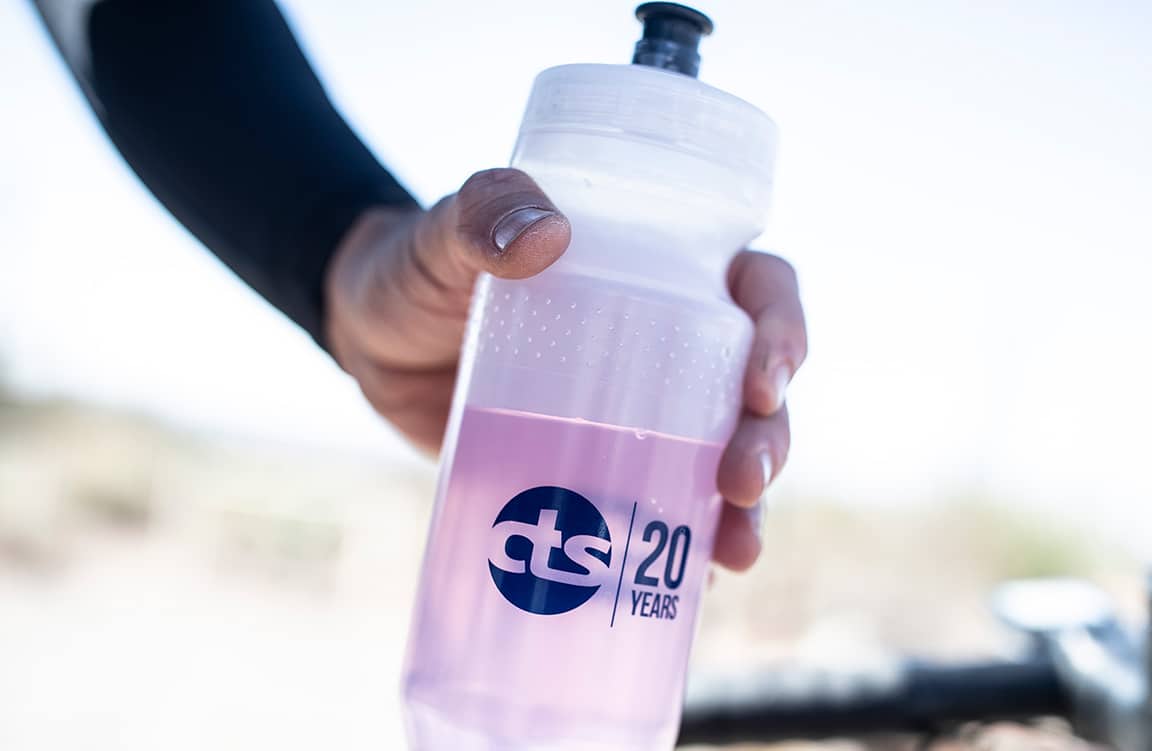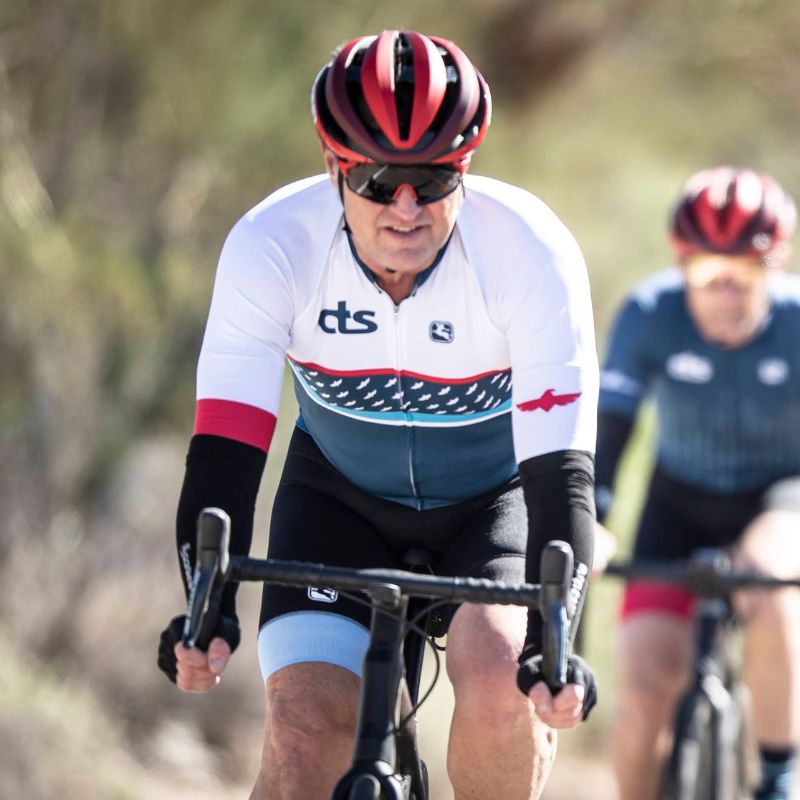
8 Truest Statements About Recovery After Workouts
By Chris Carmichael,
Founder and Head Coach of CTS
When you tally up all the workouts and rest days, Time-Crunched Athletes spend more than 95% of their time NOT exercising. Even cyclists on high-volume training plans rarely spend more than 10% of the total hours in a week training. What you do – or don’t do – for the other 90-95% of your time can enhance or hurt your recovery after workouts, adaptation, and readiness for your next training session. As a result, there are innumerable products, supplements, and ‘recovery hacks’ vying for athletes’ attention, making the entire recovery space pretty confusing. As with other areas of endurance training, the most effective tools and methods for recovery are often the simplest. After more than 30 years of coaching, here are my 8 truest statements about recovery for endurance athletes.
Sleep is Priority #1
Lack of sleep and low-quality sleep hurt your training more than you think. Some people think rest is rest, meaning time on the couch is similar to time asleep. The difference is that levels of important anabolic hormones (human growth hormone, testosterone, estrogen) peak during sleep, not while you’re watching “Yellowstone”. (read more on the architecture of sleep) More importantly, these hormones are released during specific phases of your sleep cycle, meaning shortened or disturbed sleep reduces the levels of these muscle-building and muscle-repairing hormones in your body.
Athletes over 50 (and even more so for athletes between 60-75) are already fighting an uphill battle against the natural decline in the production of anabolic hormones. Focusing on consistent, high-quality sleep is crucial for optimizing your recovery and adaptation to training stress.
Protein should be consumed throughout the day
Endurance athletes benefit from consuming more protein than the Recommended Daily Allowance (RDA), which was only designed to prevent nutrient deficiencies in the general population. Although there is some variation depending on training phase, 1.6-1.8 grams of protein per kilogram of bodyweight per day is a good target to shoot for athletes of all ages. New research indicates this may even be true for aging athletes (although increasing to 2.0 g/kg/day doesn’t hurt). During periods of reduced training workload, this amount can be reduced to 1.2-1.6 g/kg/day.
Getting enough protein per day is important (and can be a challenge), but it’s also important to spread protein consumption across the whole day instead of concentrating into 1-3 big doses. Muscle protein synthesis happens 24 hours a day but we don’t have a good way to store protein for later use, so it is better to consume protein in 20- to 40-gram portions throughout the day and evening. Pre-sleep protein intake may be beneficial, too.
Recovery begins before today’s workout ends
Most recovery-related guidelines apply equally across most sports, but I think this one is a specific opportunity for cyclists, ultrarunners, and triathletes. During longer workouts (3+ hours) and multi-day training blocks, your nutrition and hydration habits in the final hour of today’s workout can help or hurt the quality of tomorrow’s performance.
One of the biggest errors we see with endurance athletes is that they stop eating and drinking too early at the end of longer workouts. The last hour is often a cruising pace, you only have a few miles to go, and you know your pantry and refrigerator are stocked, so you leave the ProBar Bolts or Muir Energy gel in your pocket or vest so you can save it for your next workout. Or you just want to get home, so you skip the aid station or water stop. Despite being good about consuming a steady supply of exogenous carbohydrate (40-60 grams/hour, maybe up to 90g/hr for high intensity workouts or races) throughout your training session or event, consumption drops to zero. You’re inadvertently increasing the strain of the final hour, which means your extending the time and/or increasing the calories and fluids required to achieve adequate recovery.
Eat and drink in the final hour as if you still have another hour to ride or run before getting home.
The “Glycogen Window” is a genuine opportunity
Your muscles are primed to replenish glycogen stores most rapidly within the first 60 minutes or so after exercise. That hasn’t changed. What has been debated over the years is the importance of this “glycogen window”. For a long time it was sacrosanct, etched into stone. Then it was largely dismissed as propaganda from supplement companies. The truth is somewhere between these extremes. The glycogen window should be viewed as a genuine opportunity to optimize recovery, but not always essential. If you have more than one training session or competition within the same day (or this evening and tomorrow morning), then you definitely want to take advantage of the glycogen window by consuming a meal or recovery drink that’s rich in carbohydrate and includes some protein within about 60 minutes after the first session. If you aren’t training again for 48 hours, the glycogen window is still an opportunity, but you also have plenty of time to restore glycogen levels and achieve full recovery.
► Free Cycling Training Assessment Quiz
Take our free 2-minute quiz to discover how effective your training is and get recommendations for how you can improve.
All workouts should end with a cool down
The longer I’m involved in coaching the more I believe in the importance of ending workouts and races with a cool down period. When you cross the finish line or finish your last interval, blood vessels are still dilated, stroke volume is still elevated, and you’re still generating a lot of heat. During exercise, contractions by skeletal muscles assist the circulation of blood and lymph, and a cooldown period facilitates the transition back to a resting or non-exercising state. Skipping the cooldown increases the strain on the heart and circulatory system by removing this crucial assistance too quickly. In hot environments it can also contribute to overheating by reducing blood flow to the skin too quickly and reducing airflow over the body when you stop moving (this can be mitigated by fans and/or cold, wet towels).
There’s no magical recovery modality
Recovery modalities like massage, foam rolling, compression garments, cryotherapy, and percussion devices can play a role in your recovery routine if they make you feel good, and particularly if they make you stop moving and sit still for a while, but if you don’t use them that’s okay, too. Stacks of research papers continue to arrive at similar conclusions: these recovery devices and methods work for some athletes and have limited value for other athletes. Fortunately, they don’t appear to do any harm, either (as long as you have no underlying health conditions that are contraindicated). The most effective modalities are the ones that make you feel best.
There are no superfoods
The biggest problem with the notion of ‘superfoods’ is that it leads athletes (and non-athletes) to overemphasize the importance of individual foods and shift their entire nutrition strategy to center on those foods, at the expense of variety. The best thing you can do to support optimal recovery is to consume enough total calories to cover the energy expenditure from normal bodily functions, daily activity, and additional exercise. The next-best thing you can do is consume a varied whole food diet rich in fruits, vegetables, lean proteins, and plant-based fats. From an athletic performance standpoint (metabolic manipulation doesn’t always lead to improved performance), I still believe endurance athletes are best served by macronutrient compositions in the ranges of 40-50% carbohydrate, 20-30% protein, and 20-30% fat; during periods of higher-intensity training, carbohydrate intake may increase to 60% of total calories.
All stress is training stress
Recovery time and activities must adequately balance stress from all sources, including exercise, work, relationships, and daily living. This means optimizing athletic performance includes addressing the stressors in all areas of your life. Rest isn’t restful or restorative when your anxiety levels are off the charts or you’re struggling with burnout at work. Even activities aimed at recovery (i.e. the modalities mentioned above or excessive focus on dietary manipulation) can be counterproductive to recovery if they are adding stress.
► FREE Mini-Course: Learn How to Maximize Your Limited Training Time
Learn step-by-step how to overcome limited training time and get faster. Walk away with a personalized plan to increase your performance.
"*" indicates required fields


Comments 5
Thanks for a great article.
For multi-day training or events I can see the logic of a last hour of recovery to prepare for tomorrow. But otherwise is it not more worthwhile to let the blood sugar drop and stimulate some fat metabolism?
I was doing a cool down lap after a crit race in 100 degree F weather and passed out on the bike after 2-5 mins. Did I try and cool down too fast or are you better to get off the bike and walk?
What is the minimum time for a cool down for a short (less than 60 minutes) session? Is there data that indicates how much is enough for most athletes? Is 3 minutes enough? Should it be based on heart rate?I train before work and have to do at least a 10 minute warmup to avoid ruining the first interval. Adding more than 5 minutes to the cool down starts to cut into the number of intervals I can do.
My commute is 10km. My goal is to get fit enough (and thus fast enough) that my cooldown starts before my warm up ends!